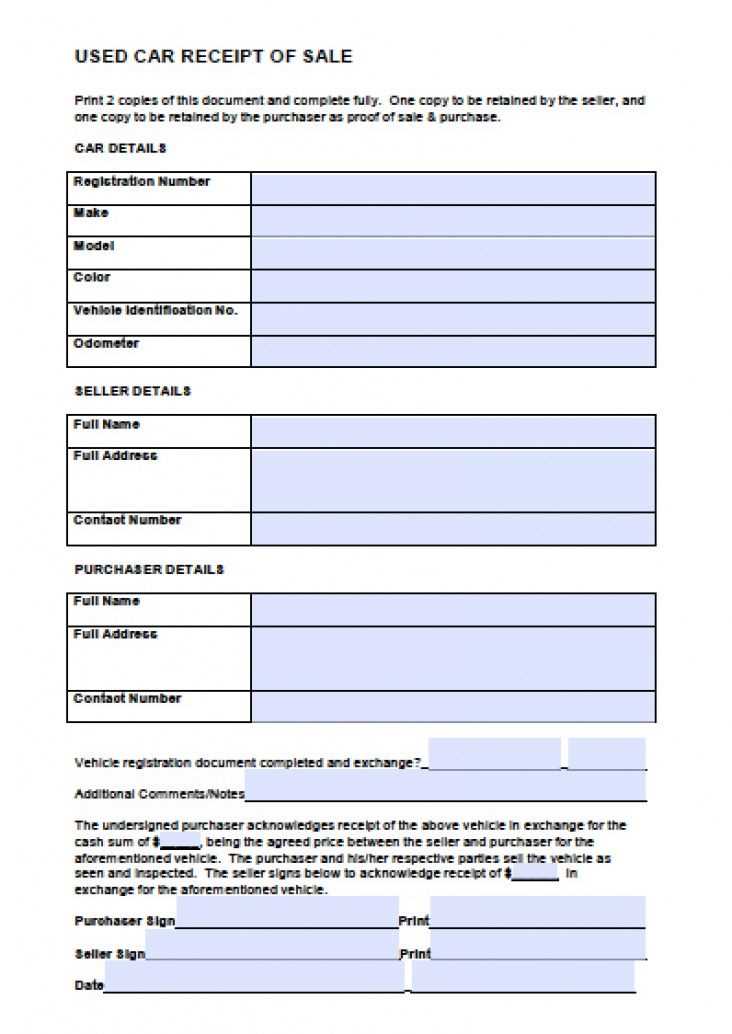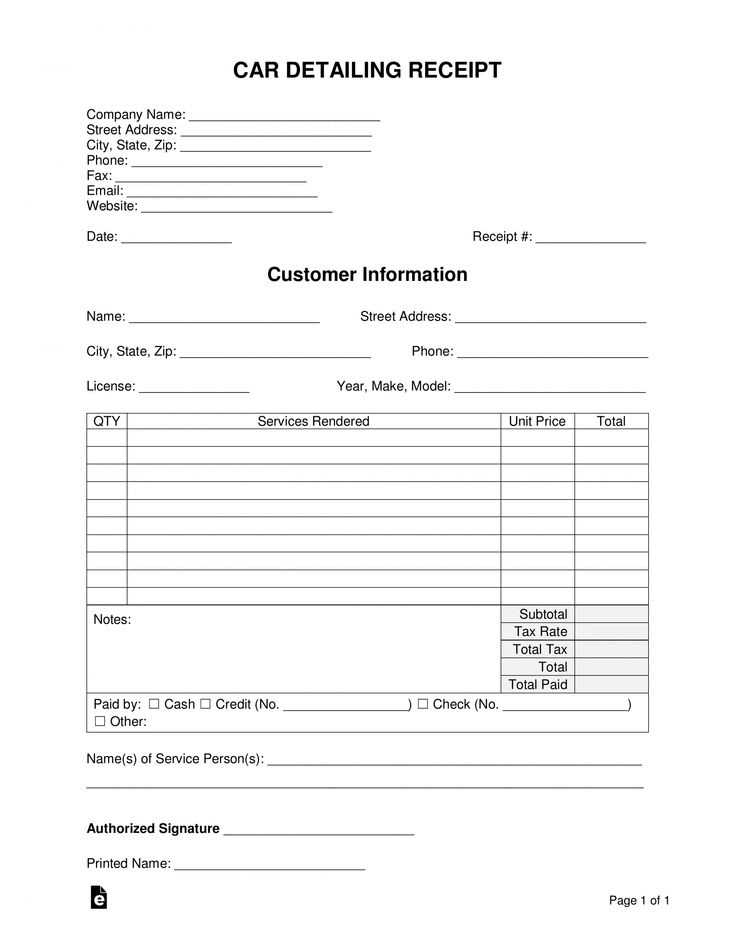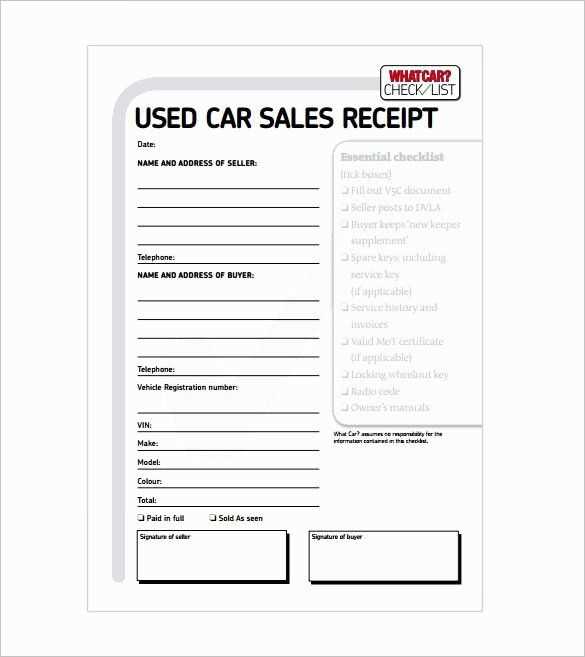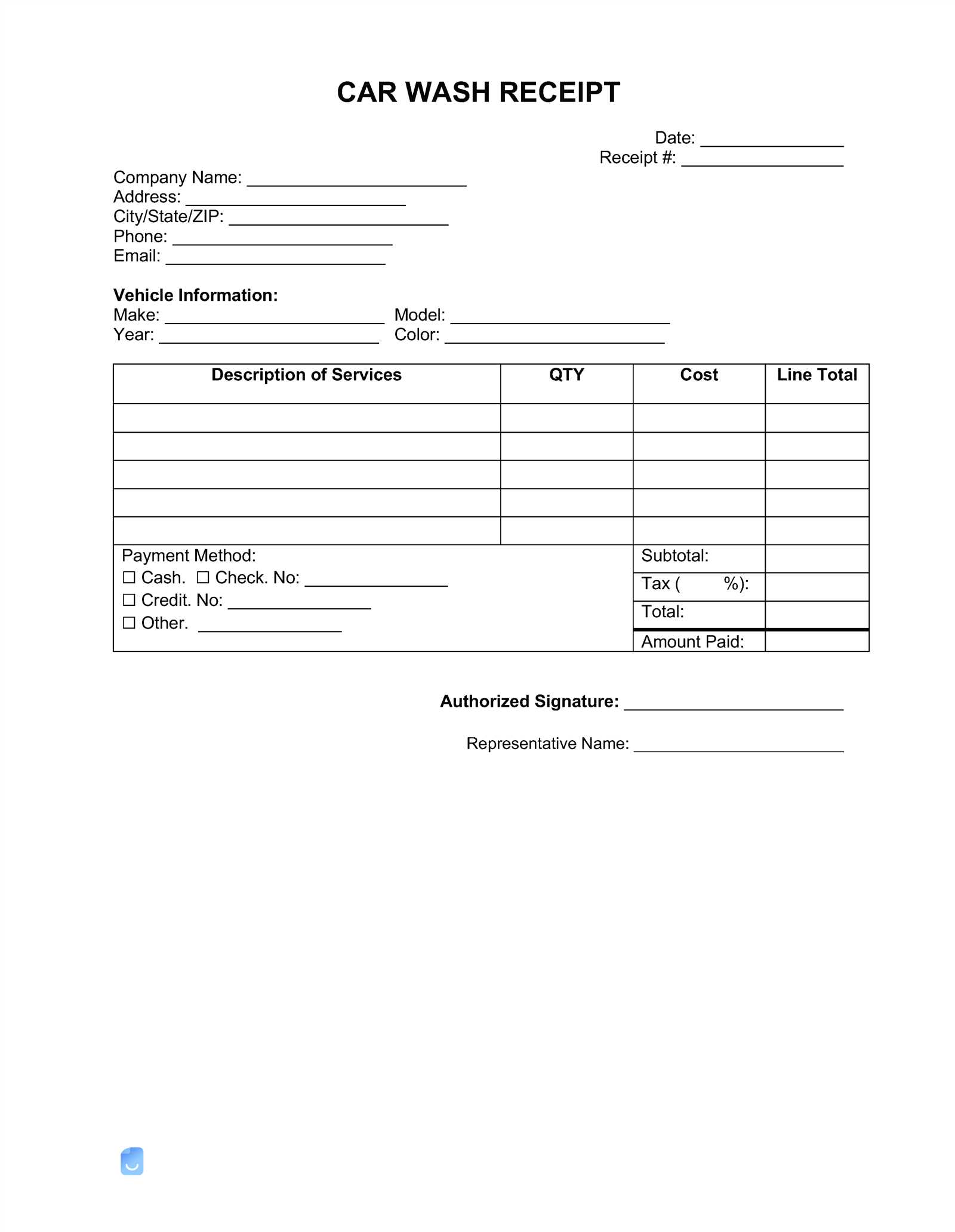
Key Information to Include
Ensure you list both the buyer’s and seller’s names clearly. Provide detailed car information: make, model, year, and Vehicle Identification Number (VIN). State the total price, including taxes and fees. The date of the transaction must be clearly noted to avoid any confusion later.
Example:
“Seller: John DoeBuyer: Jane SmithCar: 2015 Honda CivicVIN: 1HGBH41JXMN109186Price: $12,000Date: February 14, 2025”
Payment Terms

Clarify how payment was made. If the car was paid for in full, state that clearly. For financing, specify the down payment amount and the loan details. This helps prevent any misunderstandings regarding payment arrangements.
Example:
“Payment Method: CashDown Payment: $4,000Financed: Remaining balance through ABC Bank”
Signatures

Both parties must sign the receipt to validate the transaction. Signatures confirm agreement to the terms, ensuring the sale is legitimate and legally recognized.
Example:
“Seller’s Signature: _____________________Buyer’s Signature: _____________________”
Additional Information
- Warranty Information: If a warranty applies, note the terms and coverage.
- Car Condition: If the car is used, list any defects or issues.
- Return Terms: Specify if the seller offers a return or exchange policy and include the terms.
Using this template ensures both parties have a clear, accurate record of the sale. It provides important information that protects both the buyer and seller in the event of future disputes.
Receipt for Car Template: A Comprehensive Guide
Create a personalized car purchase receipt by following a simple format that includes key details of the transaction. First, list the names and addresses of both the buyer and the seller. Make sure the vehicle’s make, model, year, VIN (Vehicle Identification Number), and odometer reading are included. Specify the purchase price and the payment method used. If a deposit was paid, document the amount and the balance due at the time of purchase. Include the date of the transaction, and ensure both parties sign the receipt to confirm the agreement.
Essential Elements to Include in a Car Purchase Receipt

A proper car purchase receipt should contain the following elements:
- Seller’s Information: Full name, address, and contact details of the seller.
- Buyer’s Information: Full name, address, and contact details of the buyer.
- Vehicle Details: Make, model, year, VIN, and odometer reading at the time of sale.
- Purchase Price: The total cost of the vehicle and payment method (cash, check, loan, etc.).
- Deposit: If applicable, specify the deposit amount and payment date.
- Date of Sale: The exact date the transaction occurred.
- Signatures: Signatures of both parties to confirm the sale.
Legal Aspects of Issuing Vehicle Receipts

Issuing a receipt for a vehicle purchase serves as a legal document for both the buyer and the seller. In many regions, this receipt can be used to transfer ownership and serves as proof of the transaction for registration purposes. It’s important to ensure all the details are accurate to avoid any future disputes or legal complications. In addition, keep a copy for personal records, as this document may be required for warranty claims, insurance, or taxation matters.


